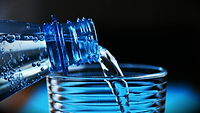PAN Europe Calls Attention to One Type of PFAS in 'Pure' Mineral Waters, Signaling Wide Contamination

Image credit: Greg Rosenke via Unsplash
An analysis conducted by Pesticide Action Network Europe (PAN Europe) raises concerns about the presence of one type of per- and polyfluoroalkyl substance (PFAS) in European mineral waters.
Trifluoroacetic acid (TFA) is a highly mobile, water-soluble PFAS that is able to penetrate and accumulate in deep groundwater reserves. It is a common stable degradation product from a number of other PFAS, including PFAS used in agricultural products and F-gases from refrigeration technologies. The concentrations of TFA in the world’s waters, soil, plants, and foods, as well as in humans, are higher than the concentrations of many other PFAS.
Typically, mineral water is considered and required to be “pure” because it originates from underground water sources, which are thought to be more protected from pollutants. However, PAN Europe’s analysis showed the ability of TFA to permeate beyond surface and tap waters to groundwater and deep aquifers that supply mineral waters. In seven of 19 mineral waters tested, TFA levels exceeded EU drinking water limits for relevant pesticide metabolites, which is 0.1 microgram per liter (0.1 µg/L). The upper limit for total PFAS proposed in the EU Drinking Water Directive (0.5 µg/L) was exceeded in one mineral water.
Although the presence of TFA was noted, all of the mineral waters tested—including the sample with the highest measured contamination level of 3.2 µg/L—were compliant with most of the current health guidelines set by EU authorities. This is true even considering a high daily consumption of mineral water (2 L for a 60-kilogram adult). PAN Europe noted that mineral water is still less contaminated by TFA than tap water.
For the study, PAN Europe collected samples of two mineral water brands from France, four from Belgium, one from the Netherlands, one from Luxembourg, and one from Hungary, as well as the five best-selling mineral water brands from Austria, between May and June 2024. The samples were sent to the Water Technology Center in Karlsruhe, Germany for analysis. The German Association for the Environment and Nature Conservation (BUND) also provided PAN Europe with the results from previously conducted analyses of five German mineral and spring waters.
Looking for a reprint of this article?
From high-res PDFs to custom plaques, order your copy today!






